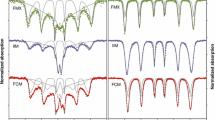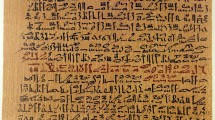Summary
The distribution and metabolism of intravenously injected14C-tetracaine were studied in guinea pigs. Initially, the injected drug accumulated in various organs. An especially high concentration of radioactive material was found in the lungs. Probably, the drug is retained by pulmonary tissue as a kind of depot, owing to unknown haemodynamic current mechanisms. The redistribution takes place rather quickly. 90 min after the injection, a radioactivity level higher than that in the serum was found only in the liver, kidneys and adrenals. The excretion via the bile starts more quickly and is quantitatively more important than that in the urine.
Metabolic degradation of tetracaine in the living organism occurs rapidly. As a result of hydrolysis 4-n-butylaminobenzoic acid and 2-dimethylaminoethanol are formed. Apart from these two compounds other metabolites were found in the blood 90 min after the application of the drug.
Similar content being viewed by others
Literatur
Åkerman, B., Åstrom, A., Ross, S., Telc, A. A.: Studies on the absorption, distribution and metabolism of labelled Prilocaine and Lidocaine in some animal species. Acta pharmacol. (Kbh.)24, 389 (1966).
Beisenherz, G., Koss, F. W., Klatt, L., Binder, B.: Distribution of radioactivity in the tissue and excretory products of rats and rabbits following administration of14C-Hygroton. Arch. int. Pharmacodyn.161, 76 (1966).
Fussgänger, R., Schaumann, O.: Über ein neues Lokalanaesthetikum der Novocainreihe (Pantocain). Naunyn-Schmiedebergs Arch. exp. Path. Pharmak.160, 53 (1931).
Gänshirt, H.: In: E. Stahl: Dünnschicht-Chromatographie, S. 329. Berlin-Göttingen-Heidelberg: Springer 1962.
Hansen, D., Ohnesorge, F. K., Palisaar, E.: Die Verteilung von14C-markiertem Lidocain und Prilocain nach intravenöser Applikation beim Meerschweinchen. Anaesthesist17, 168 (1968).
Heim, F., Haas, A.: Über den fermentativen Abbau von Pantokain, Novokain und Kokain durch Extrakte aus Meerschweinchenleber, -niere, -gehirn und muskulatur. Naunyn-Schmiedebergs Arch. exp. Path. Pharmak.211, 458 (1950).
Runge, H. G., Schmidt, S.: Pantocain, ein vollwertiger Kokainersatz. Arch. Ohr.-, Nas.-u. Kehlk.-Heilk.128, 232 (1931).
Sung, C. J., Truant, A. P.: The physiological disposition of lidocaine and its comparison in some respects with procaine. J. Pharmacol. exp. Ther.113, 433 (1954).
Stahl, E.: Dünnschicht-Chromatographie, S. 507. Berlin-Göttingen-Heidelberg: Springer 1962.
Williams, T. R.: Detoxication mechanisms, 2. Edit., p. 451. London: ChapmanHall Ltd. 1959.
Author information
Authors and Affiliations
Additional information
Der Deutschen Forschungsgemeinschaft sei für die gewährte Sachbeihilfe gedankt.
Rights and permissions
About this article
Cite this article
Hansen, D. Verteilung und Stoffwechsel von14C-markiertem Tetracain nach intravenöser Injektion beim Meerschweinchen. Naunyn-Schmiedebergs Arch. Pharmak. 265, 347–358 (1970). https://doi.org/10.1007/BF00997192
Received:
Issue Date:
DOI: https://doi.org/10.1007/BF00997192




